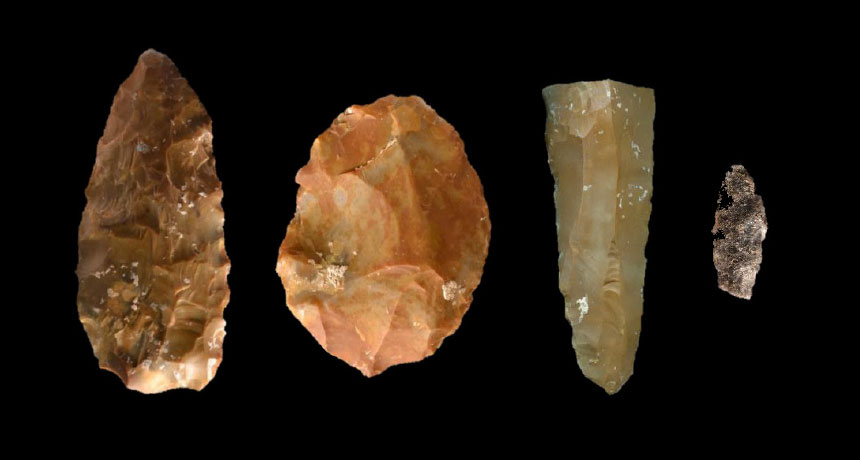Texas toolmakers add to the debate over who the first Americans were

People inhabited what’s now central Texas several thousand years before hunters from North America’s ancient Clovis culture showed up, researchers say.
Excavations at the Gault site, about 64 kilometers north of Austin, produced a range of stone artifacts that date to between around 16,700 and 21,700 years ago, reports a team led by archaeologist Thomas Williams of Texas State University in San Marcos. An analysis of 184 of those finds identified 11 spearpoints unlike any others that have been found at ancient American sites, the scientists conclude July 11 in Science Advances.
Researchers have long argued about whether people reached North America before the rise of Clovis culture 13,000 years ago. Evidence from the Gault site joins other recent reports of humans venturing deep into North America far earlier (SN: 6/11/16, p. 8), which would take Clovis people out of the running for the title of first New World settlers.
Williams’ group estimated the age of the Gault pre-Clovis discoveries with a method that calculates the time since artifact-containing sediment has been exposed to sunlight.
Previous work at the Gault site uncovered Clovis spearpoints and other implements from roughly 13,000 years ago, as well as tools and other artifacts made by groups dating to as recently as a few thousand years ago. Some of the newly described stone tools at Gault, such as small, rectangular cutting implements, display similarities to Clovis tools, the investigators say. Overall, though, the earlier artif